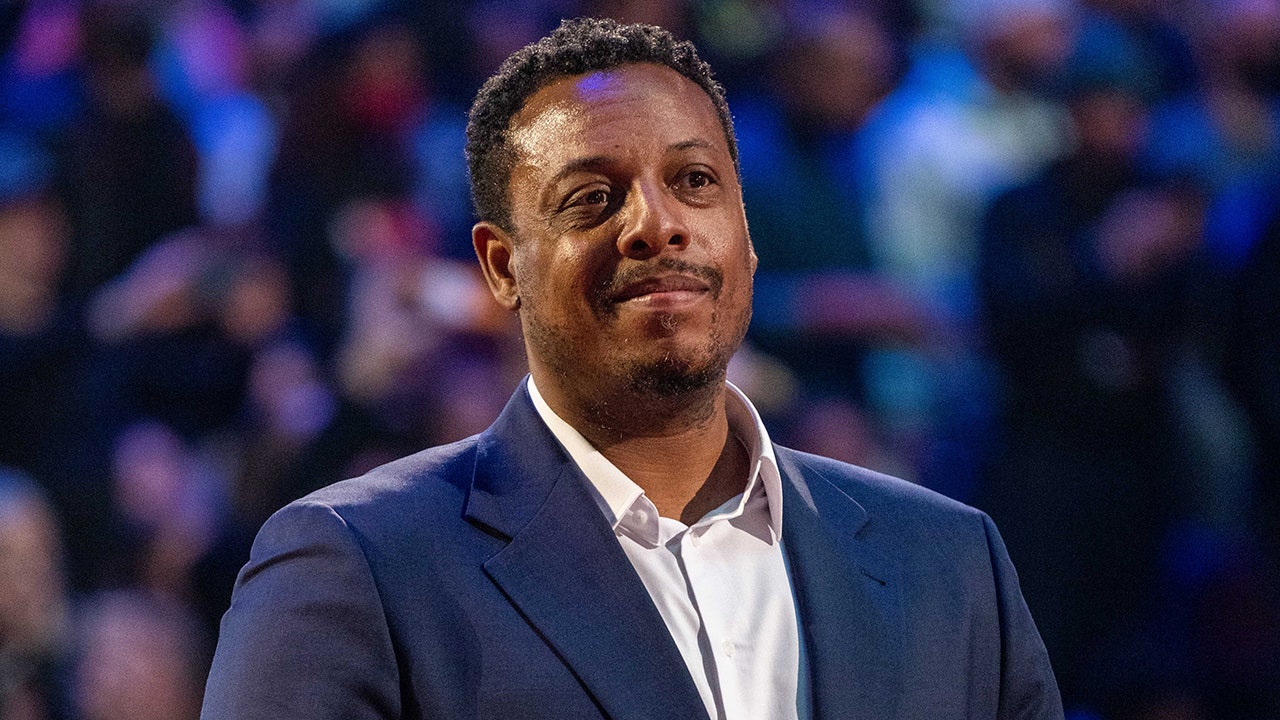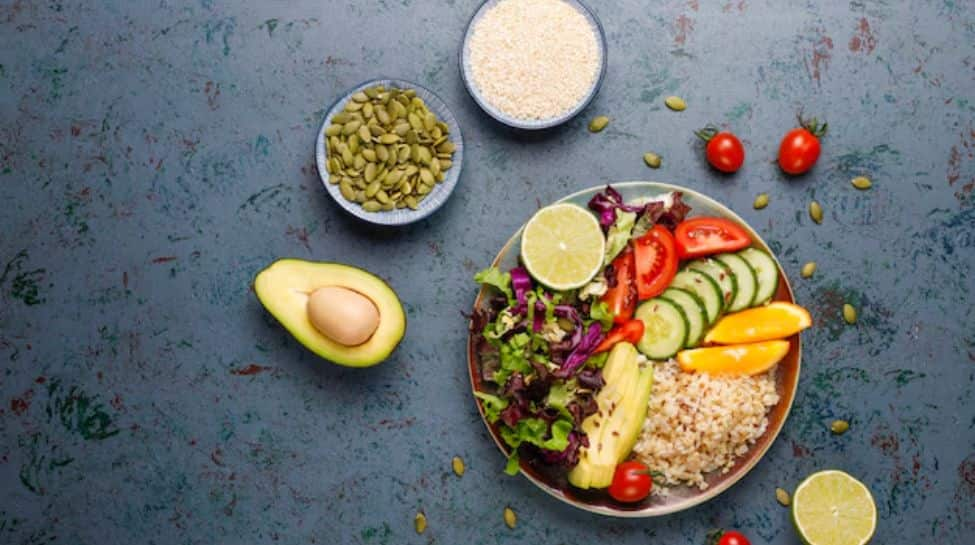Confronting you head-on are a hanging flag, and a man in danger of hanging.
The flag, unfurled vertically between two white structural columns in a gallery at El Museo del Barrio, resembles the stars and stripes of the United States, except the blue and red are black, and the white has been dyed a gristly pink — stained with blood, according to the exhibition materials, given by undocumented immigrants living in New York.
The man is Carlos Martiel, an Afro-Cuban performance artist known for putting his body through grueling, painful trials while audiences watch. He’s not actually present in El Museo del Barrio: A large monitor leaning against the back wall, aligned with the flag, plays footage from a 2022 performance titled “Cuerpo” — body, in Spanish. Martiel is naked except for a rope, looped around his neck and attached to the ceiling of a gallery. A handful of people take turns shouldering his legs and propping up his back while he grimaces in the noose.
These are the two strongest, most unsettling artworks in Martiel’s first major survey, also titled “Cuerpo,” in New York City, where he’s lived since 2012. The words “undocumented immigrants” in the written description of the flag work, “Insignia VII,” charge it with violence. The noose performance is tense, dynamic and uncertain, even from the safe distance of a video. You are dared to deny the suffering of the artist, or of those he stands for.
The 16 performances represented in the gallery by videos, photographs and drawings include more than a decade of ordeals of endurance and self-mutilation, in which the often-stoic artist evokes the brutal history of colonialism, racism and enslavement. Martiel doesn’t intellectualize slavery’s wake; instead, he makes it terribly present, in the body of a living person: his own.
A video of the earliest piece on view, “Prodigal Son,” from 2010, shows the artist pinning his father’s Cuban military medals to his naked chest. For “Continente,” from 2017, Martiel had nine small diamonds embedded in his skin, then he lay supine in a New York gallery while a white man sliced them out. In images of every successive work, you can see the marks left on Martiel’s body by the previous ones.
You can only imagine Martiel’s pain; at El Museo, you also feel his absence. Seeing a photograph of Martiel standing with an armload of animal entrails (“Monument III,” 2021) is different from smelling that gore. Instead of sharing space with the artist, a viewer must relate to these bodily performances from the remove of pictures and sketches, as well as their first-person descriptions on the list of works.
Here’s the explanation of “Monument II,” executed at the Guggenheim in 2021: “I stand handcuffed on a pedestal in the center of the museum’s rotunda. This work reflects on the structural racism and political and systemic violence historically suffered by the Black and immigrant body in the United States.” (Before he moved to New York, Martiel often reflected on the racial prejudice in Cuban society.)
It’s damning to restage the auction block of a slave market in a museum lobby, a (literally and historically) “white” space dedicated to beautiful and provocative objects. Martiel’s posture is also dignified, erotic, a sardonic echo of the chiseled physiques of classical marbles on their plinths.
But once the shock of these performance documents abates, you’re left with the work’s heavy metaphors — and images that, while horrible, are easier to stomach than the steady spectacle of Black and brown death in the news.
This survey makes me miss the wry contradictions of “Untitled (Go-Go Dancing Platform),” by Félix González-Torres — another queer Cuban-born artist working in New York, who died in 1996 — in which a muscled man displayed on a blocklike stage wears tight shorts and a Walkman and dances to music only he can hear. His objectification is cut with joy. It makes me miss the perverse self-debasement of Pope.L, whose prone crawls through major cities invite the madcap uncertainty of an uncontrolled world, in a way that Martiel’s elegant symbolic presentations — which include digging a Mali sign for wisdom into a lawn using his teeth — don’t.
There’s no mistaking the message, for example, in a photograph at El Museo of the 2019 performance “South Body,” in which the shaft of a small American flag pierces the skin of Martiel’s shoulder. It leaves a fat scar.
And Martiel’s endurance performances seem undercut by the idea that — unlike the enslaved people being appraised in the markets of 18th-century New York — he could climb down from that pedestal at any moment. Eventually, that’s exactly what he did.
Then again, free will is as essential as gut force to Martiel’s work — just as it is for the durational performances of EJ Hill, Nona Faustine, or Miles Greenberg, Black artists who similarly put themselves on public display in various states of nakedness and distress. By choosing his fate, Martiel pushes past simple victimhood, daring to represent every victim of racist violence — and pins the viewer in the position of every perpetrator or witness. Whether or not your skin color matches the pale pink stripes on Martiel’s flag. And if a man were really hanging from his neck, who would let him choke?
Cuerpo: Carlos Martiel
Through Sept. 1. El Museo del Barrio, 1230 Fifth Avenue, Manhattan; 212-831-7272, elmuseo.org.















































